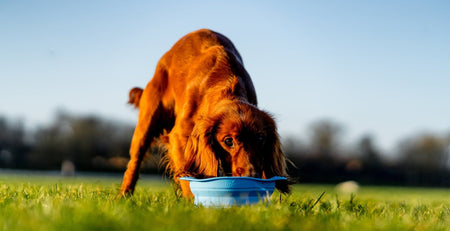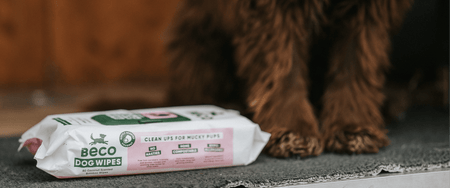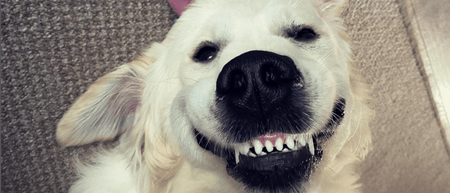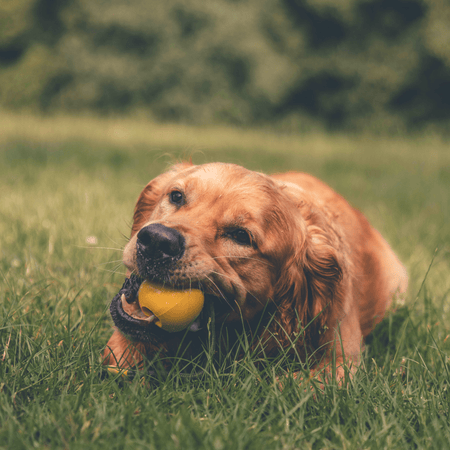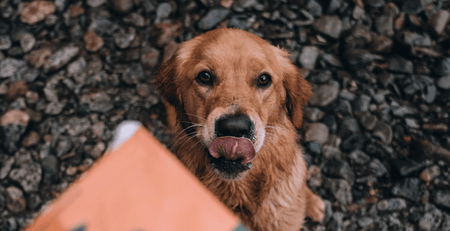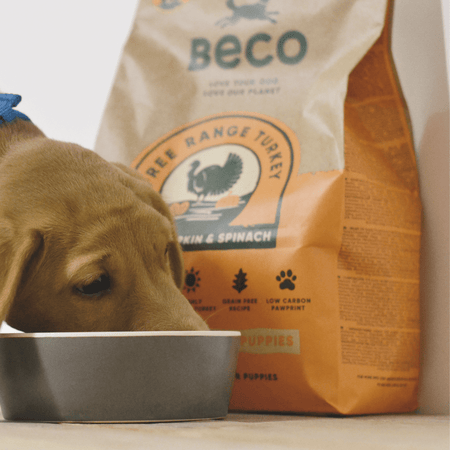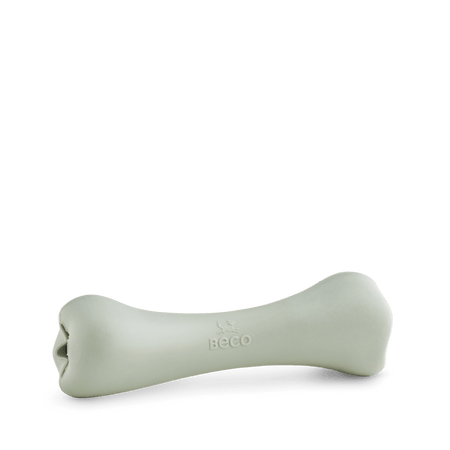Key Summary
Puppies begin teething around three weeks, transitioning from milk teeth to adult teeth which completes around six months of age.
A puppy's dental progression is systematic, starting with incisors, followed by canines, premolars, and molars, resulting in 42 adult teeth.
Spotting fallen teeth or changes in eating behavior can indicate your puppy is shedding its baby teeth. It's normal for some puppies to accidentally ingest these teeth.
During teething, providing chew toys can help alleviate gum discomfort. Puppies may chew more frequently during this time, making supervision essential.
While teething is natural, complications like retained baby teeth, broken teeth, or gum infections may arise. Regular vet checks and understanding breed-specific dental timelines are crucial for proper dental care.
When Do Puppies’ Baby Teeth Fall Out?
Dogs, much like humans, undergo distinct dental stages. They begin their life toothless, but this tranquil period is short-lived. By three weeks, the puppy's mouth starts its first dental transformation with the eruption of milk teeth.
Three weeks: The baby incisors, or tiny front teeth, cut through the gums.
Six weeks: The baby canines and premolars are fully present, rounding up to 28 teeth.
It’s worth nothing that these milk teeth aren’t merely ornamental. They enable the puppy to transition from a liquid diet to a more solid one. However, the most substantial change commences at three to three-and-a-half months, signaling the replacement phase where adult teeth come into play.
Incisors
Situated at the forefront of a dog's jaw, the incisors play multiple roles. From grooming to helping strip meat off bones, these sharp little tools are indispensable. Typically, the adult incisors are the pioneers, emerging around the third month. For some breeds or individual dogs this milestone might shift to the fourth or fifth month.
Canines
Following the incisors are the canine teeth, which emerge between four to five months. Far from being mere points in a dog's mouth, these teeth are essential for various canine tasks – from puncturing to holding onto items.
Premolars
The baby premolars yield to their adult counterparts at around the six-month mark. These teeth multitask, helping dogs tear apart food and engaging in intricate chewing actions.
How Long Does it Take for Puppy Teeth to Fall Out?
Summarily, the dental transition from baby to adult teeth spans approximately three months. By half a year, a puppy should showcase a complete set of adult teeth, leaving behind the deciduous/milk teeth phase.
In What Order Do the Milk Teeth Fall Out/Adult Teeth Erupt?
A puppy's dental progression is methodical:
Incisors
Canines
Premolars
Molars
Post-transition, a dog boasts a robust set of 42 teeth – a combination of molars, premolars, canines, and incisors.
Timeline Table:
| Age | Teeth |
|---|---|
| 3 Weeks | Baby Incisors Erupt |
| 6 Weeks | Baby Canines, Premolars Erupt |
| 3 Months | Adult Incisors Erupt, Baby Incisors Shed |
| 4-5 Months | Adult Canines Erupt, Baby Canines Shed |
| 6 Months | Adult Premolars Erupt, Baby Premolars Shed |
| >6 Months | Adult Molars Erupt |
How Do You Know When Your Puppy’s Teeth Are Falling Out?
Akin to a baby's first tooth fairy visit, spotting fallen teeth around the home is the most direct indication. However, puppies, with their innate curiosity, sometimes ingest their fallen teeth. In fact, this isn’t at all uncommon. Additionally, behavioral shifts like evident discomfort during meals or prolonged eating durations can hint at teething.
What Do Puppy Teeth Look Like When They Fall Out?
For the keen-eyed pet parent, a fallen puppy tooth might appear as a tiny white entity, reminiscent of a small pill or a sharp grain of rice.
Do Puppy Teeth Bleed When They Fall Out?
Shedding teeth might be accompanied by minimal bleeding. Such instances manifest as small blood spots on their toys. However, any alarming amount of blood should prompt a visit to the vet.
Is it Normal for a Puppy to Lose Teeth?
Indeed, shedding baby teeth is a rite of passage for puppies. This natural process prepares them for their adult phase, necessitating larger teeth for their grown jaws.
What is Puppy Teething?

Teething is the dental adolescence for puppies. Commencing at three weeks, this is when those first pearly whites begin their breakthrough.
How to Navigate a Puppy’s Diet During the Teething Period
During teething, a puppy's gums are sensitive. Offering a balanced diet that's gentle on their gums is pivotal; knowing what to feed your puppy is crucial not only for their gums, however, but their overall growth and development, too.
Should You Give Your Puppy Chew Toys During Teething?
Chew toys are the unsung heroes during a puppy's teething phase. They offer much-needed relief, catering to the puppy's natural instinct to chew while alleviating gum discomfort. Depending on your puppy's preference, a range of toys from durable Nylabones to soft plushies can be introduced.
Challenges of Puppy Teething
Puppies, when teething, can sometimes be quite the handful. They have a heightened urge to chew, and anything from your favorite shoes to the couch's corner might seem tempting. It's essential to supervise them and redirect this natural instinct towards safe chew toys.
Furthermore, while mild gum bleeding is expected, any persistent bleeding, especially if coupled with a loss of appetite, warrants immediate vet attention. It's essential to establish a balance between understanding the natural teething process and recognizing when professional intervention is necessary.
Potential Issues with Puppy Teething
It's not always smooth sailing when puppies lose their teeth. While many puppies experience standard teething, others might face complications:
Retained Baby Teeth: Sometimes, adult teeth emerge before the baby tooth falls out. This can cause the adult tooth to come in crooked or misaligned. If you notice two teeth occupying one spot, it's essential to consult your veterinarian.
Broken Teeth: Puppies are explorers, and this can sometimes lead to chipped or broken teeth, especially if they bite on something too hard for their fragile baby teeth. A broken tooth can be painful and can lead to infection.
Gum Infections: Just like humans, puppies can also suffer from gum diseases. Red, swollen gums, bad breath, and excessive drooling can be signs of gum infections
Caring for Your Puppy’s Teeth
Dental hygiene should start early to ensure your puppy grows into a dog with a healthy set of teeth.
Tooth Brushing: Start brushing your puppy’s teeth when they are young. Use a soft-bristled toothbrush and dog-specific toothpaste. Regular brushing can prevent tartar build-up and gum disease.
Dental Treats: There are numerous treats on the market designed to improve dental health. These can reduce the buildup of plaque.
Regular Vet Checks: Your vet will typically check your dog's teeth during routine visits. They can advise if a professional clean is necessary.
Understanding Breed-Specific Dental Development
A balanced puppy diet is not only crucial for overall growth but also plays a pivotal role in dental development. Foods rich in calcium and phosphorus can strengthen teeth, ensuring they grow healthy and robust.
Kibble vs. Wet Food: Some believe that dry kibble can help in keeping teeth clean, as the abrasive action of the food can reduce plaque. However, it's vital to ensure the kibble is of high quality. Wet food, while easier for a teething puppy to eat, can sometimes lead to faster plaque buildup.
Natural Chews: Raw bones, under supervision, can act as natural toothbrushes. The chewing action can help clean the teeth and massage the gums.
Comforting a Teething Puppy: Holistic Approaches
-
Cold Chew Toys: Just like human babies, a cold object can soothe a puppy's sore gums. Freeze a wet cloth or specific puppy teething toys to give them relief.
Natural Remedies: Some pet parents swear by chamomile tea for its calming properties. Soaking a cloth in chamomile tea and then freezing it can act as a soothing chew toy.
Massage: Gentle massages can help too. With clean fingers, you can softly rub your puppy's gums, providing relief from the discomfort.
The Financial Implications of Puppy Teething
Puppy teething, while a natural phase, can come with certain financial commitments for pet owners. Investing in quality chew toys can be one of the primary expenses, with prices ranging widely based on brand, durability, and the materials used. It's beneficial to have a variety of toys on hand to cater to your puppy's changing preferences, which can quickly add up.
In addition to toys, considering dietary supplements or teething-specific treats can also contribute to expenses. Some owners opt for specialized diets or soft foods during this period, which may carry a premium price compared to regular puppy food.
Another critical financial consideration is veterinary care. Regular check-ups are essential to monitor dental progression, and any complications, such as retained baby teeth or infections, can result in additional costs. Procedures to remove problematic teeth, for instance, can incur sizable bills.
𝐢 Potential damage to household items due to increased chewing urges can also hit your wallet. From ruined shoes to damaged furniture, the indirect costs of a teething puppy can be surprising.
Frequently Asked Questions (FAQs)
Do Puppies Get Sad When Teething?
Puppies experience a range of emotions and discomforts during the teething process, much like human babies. While it's not accurate to label their behavior as "sadness" in the same way humans experience it, teething can cause puppies discomfort, irritability, and stress. Here's why:
1. Physical Discomfort: As teeth erupt and shed, they can cause soreness in a puppy's gums. This might make them less playful and more lethargic.
2. Change in Appetite: The discomfort might result in reduced appetite, leading some pet owners to perceive this as sadness or depression.
3. Restlessness: Puppies might appear restless or agitated due to the pain or the unfamiliar sensation in their mouth.
4. Seeking Comfort: You might notice your puppy seeking more comfort during this phase, like cuddling more or being more attached to their human.
It's essential to provide your teething puppy with comfort, appropriate chew toys, and monitor their behavior. If your puppy seems excessively lethargic, it might be a good idea to consult your veterinarian.
How Do I Know if My Puppy is Teething or Aggressive?
Distinguishing between teething behavior and genuine aggression in puppies is crucial for appropriate training and care. Here's how you can identify the difference:
1. Age: If your puppy is between 3 weeks to 6 months, it's prime teething time, and the biting is more likely related to that.
2. Nature of Biting: Teething puppies tend to gnaw and chew on objects, hands, or feet, but their bites are exploratory and not meant to cause harm. Aggressive behavior often comes with more forceful biting, growling, and guarding behavior.
3. Objects of Interest: Teething puppies are often indiscriminate and will try to chew on anything from toys to furniture. Aggressive behavior is often targeted towards specific triggers like other animals, certain people, or during particular situations like mealtime.
4. Other Body Language: Puppies exhibiting aggressive behavior often show other signs, such as raised hackles, baring teeth, stiffened body, or deep growls. Teething puppies might whimper or seem distressed due to discomfort.
5. Response to Distraction: If you offer a chew toy and the puppy immediately diverts attention to it, it's likely teething behavior. An aggressive puppy might not be so easily distracted.
If you're concerned about aggressive behavior, it's crucial to address it early.
Consult a veterinarian or a professional dog trainer to ensure appropriate training and to rule out any potential health issues causing the aggression. Remember, early socialization and positive reinforcement training are key to raising a well-adjusted dog.
When Do Puppy Teeth Fall Out? Some Final Thoughts
Navigating the teething journey of a puppy might seem daunting at first, but with the right knowledge, patience, and tools, it's a phase that can be handled with ease.
That three-month (give or take) period as the baby teeth erupt, and then fall out and are replaced by the adult teeth, is completely natural, and whilst there might be some minor discomfort for your pup, this can be mitigated in the ways outlined above.
By understanding the nuances, potential challenges, and remedies, you're not just helping your furry companion but also ensuring that the foundation is laid for a lifetime of dental health. Why not view our own range of fun chew toys to help with your pup’s teething journey?
And always remember, whenever in doubt, always turn to professionals. Your veterinarian will always be the best guide in your puppy's teething journey.




